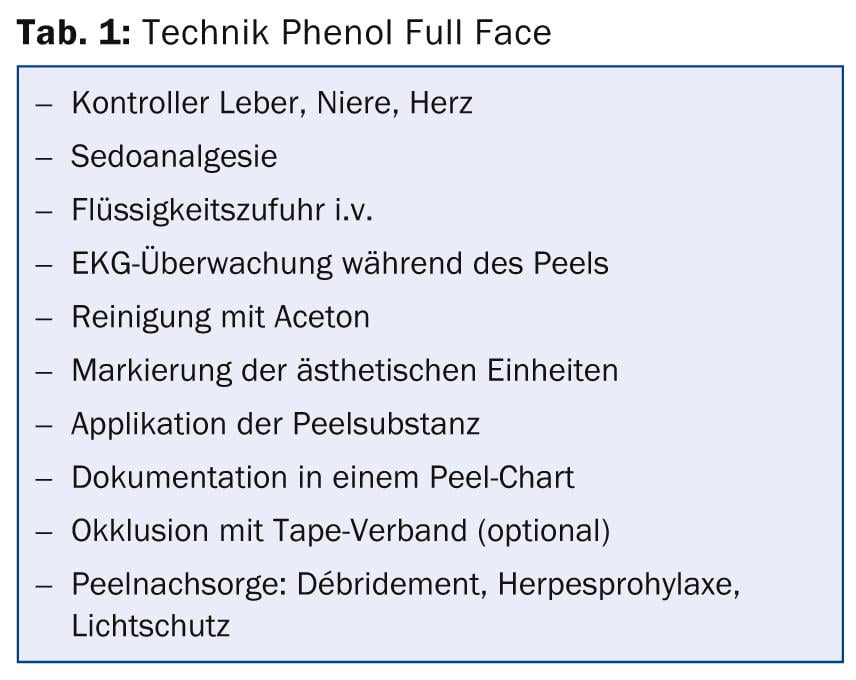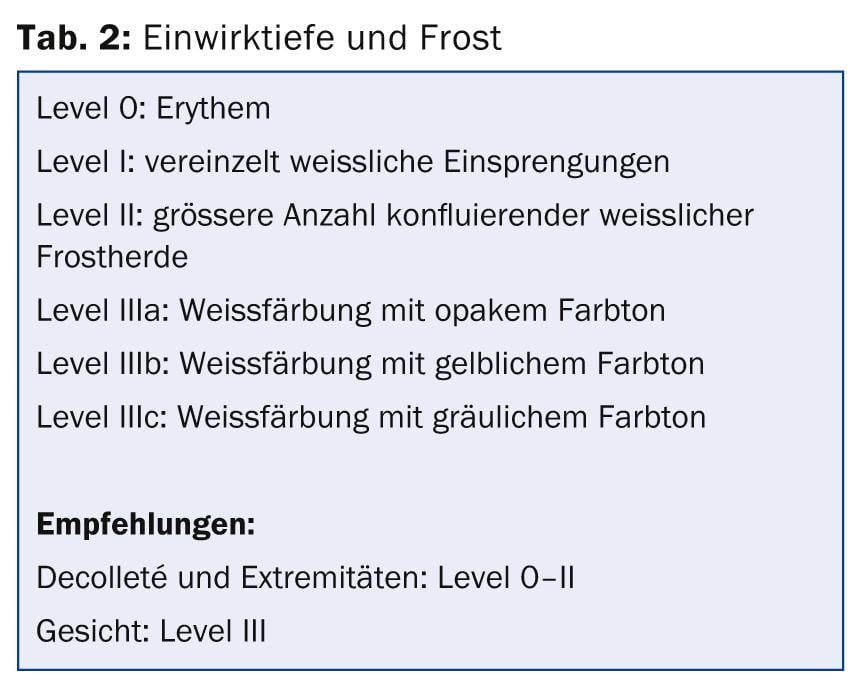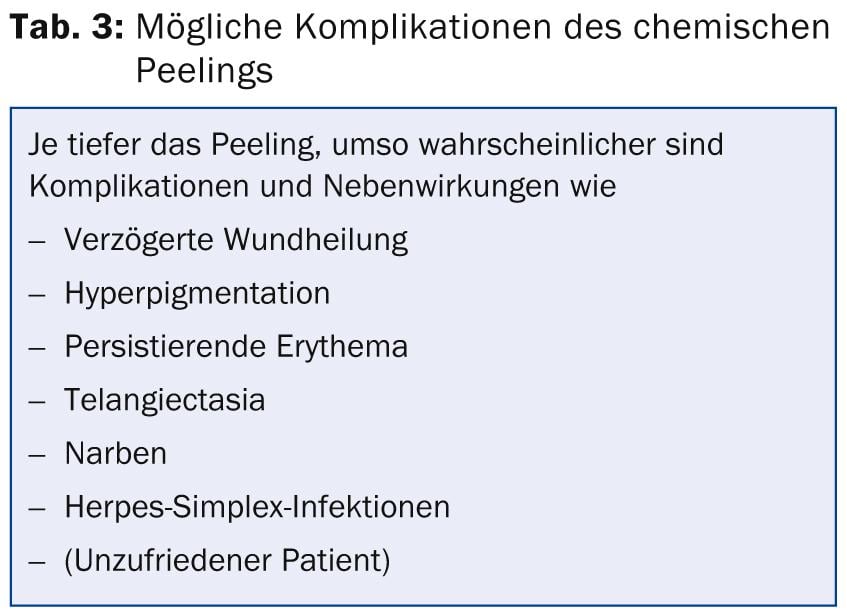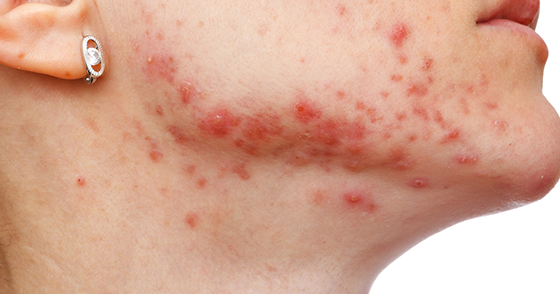At the first Swiss Live-Workshop Chemical Peeling in Muttenz, the participants were taught the most important information, tips and tricks in the field of superficial, medium-depth and deep chemical peeling during two days. These included lectures by renowned experts in the field, such as German dermatologist Luitgard G. Wiest, MD, and local expert, workshop chair and SGEDS president Oliver Ph. Kreyden, MD. The program was rounded off by live peelings with TCA 35% and phenol.
The “Grande Dame of Peeling”, Dr. med. Luitgard G. Wiest, Munich dermatologist with many years of practical experience in this field, explained to the participants what chemical peeling is all about. “It is one of the top five non-surgical procedures along with botulinum, hyaluronic acid, laser hair removal and microdermabrasion. In principle, a wide range of peel solutions exists for individual treatment of countless indications. These solutions have a long shelf life at room temperature. The costs are therefore exclusively for the materials, otherwise no investment is necessary. Technique and application in practice are standardized and lead to reliable results, a combination with the other techniques just mentioned is possible.”
Different depths of the peeling
In chemical peeling, the epidermis and dermis are damaged in a controlled manner by peeling solutions, i.e. controllable exfoliation takes place with subsequent dermoepidermal regeneration (collagen neosynthesis in the dermis). Classically, superficial peeling is distinguished from medium-deep and deep peeling. The depth to be achieved depends on the chemical agents used, the application method and the composition of the formulation. The medium-depth form penetrates into the papillary dermis and upper stratum reticulare, while the deep form penetrates into the mid-reticular dermis. In order to select the appropriate peeling method, it is necessary to have a good knowledge of the peeling substances and their concentration, i.e. the penetration depth of the solution must correspond to the depth of the skin defect. According to Dr. Wiest, the five P’s (Patient, Plan, Peeling Substance, Prevention, Practical Experience) should be noted.
“The ideal patient for a medium-depth and deep chemical peel has fair skin, blond or red hair and blue eyes,” Dr. Wiest summarized, “It’s also very important that the patient follows your instructions meticulously.”
Good planning includes counseling and making the correct decision about which peel is appropriate for which indication.
Indications for superficial peels, where the depth extends to the upper stratum papillare, include acne, incipient UV damage, rosacea, hyperpigmentation, folliculitis, and keratosis pilaris. Alphahydroxy acids (AHA), salicylic acid (SA), pyruvic acid (PA) and the most commonly used trichloroacetic acid (TCA, 15-35%) are used. Superficial peels (all mentioned except TCA) have exclusively a rejuvenation effect and show an improvement of the skin appearance mostly after multiple applications. Moreover, since the mechanisms of action differ (fruit acids, etc. act by irritation by lowering the pH of the skin, TCA acts in the precipitation of proteins), one cannot equate the different active ingredients. One thing is certain: TCA 15%, especially in combination with Jessner, can also produce very good results for the indications listed above. Combination peels with different solutions in the same facial area, e.g. Jessner solution with TCA, increase the depth of action. Aesthetic effects are the reduction of cellular atypia and pigmentary shifts and the creation of a compact, smooth and shiny epidermis.
Indications for medium-depth peeling include fine wrinkles, shallow acne scarring, loss of elasticity, superficial UV damage and hyperpigmentation. Combination peels of Jessner and TCA 35%, TCA 35-50% or phenol 88% are used, for example. Mandatory is a pre-treatment four weeks before the peeling with vitamin A acid, glycolic acid and hydroquinone, in some selected cases a treatment of the mimic areas with botulinum toxin A (BTX-A) is recommended two weeks before.
Indications for deep peeling are deep acne scars, advanced photoaging and actinic keratoses. Contraindications are keloid formation, retinoids during the last six months, Fitzpatrick skin type IV-VI, pregnancy and lactation. The Baker/Gordon solution, which contains 50% phenol and 2.2% croton oil, is frequently used. Croton oil is crucial for the depth effect. During deep peeling, it is essential to control systemic toxic effects on liver, kidney, heart, as well as to perform herpes prophylaxis and good wound healing management. Table 1 summarizes the specific technique for full face peeling with phenol.

This and a full face peel with TCA 35% were then also performed live at the workshop (Fig. 1a-1d).

The frost
“Sog. Lunchtime peels are very superficial, there is no frost, therefore the treated persons are usually socially fit again after a few hours. Weekend peels with Jessner and 15 or 20% TCA also do not cause any loss of work. Peels are performed on Thursday, on Friday the effects can still be made over, and on Saturday and Sunday the peeling begins, which is largely over by Monday. The erythema is then covered with makeup.” The frost referred to is a whitish discoloration after the peel solution is applied, which results from the precipitation of epidermal and dermal proteins. The depth of exposure is also reflected in the frost (Tab. 2). In addition, it depends on the pretreatment, e.g. with an AHA acid cream.

Good education of the patient
“The correct indication and extremely good patient education are important for a good result. This in turn requires a great deal of experience in the use of peeling substances in general and in dealing with aesthetic patients in particular,” says Oliver Ph. Kreyden, MD, chairman of the workshop and president of the SGEDS. One must take an accurate history and make a diagnosis based on the severity of the skin damage, the Fitzpatrick skin type, and the area to be treated. A precise treatment plan should then be drawn up and the patient informed of the details, but above all of the possible side effects and complications (Tab. 3) .

Things to address in any case before a TCA peel: Herpes prophylaxis, pre-treatment (pre-peel), pain management, timing, post-treatment, possible side effects, complications and their management, and patient-doctor cooperation. One must be prepared for the fact that the reactions of those treated after a chemical peel may be severe. That’s why it’s not only about the correct indication, but also about an accurate assessment of whether the patient, and by the way, you yourself, are ready for it.” Optimal conditions for chemical peeling are: Correct indication, the doctor is sure that the treatment will be successful, and the patient is looking forward to the treatment (especially to the result) and trusts the treating doctor. Unrealistic expectations on the part of the patient or previous problems with other doctors are tricky. Especially in the case of clients who are not ready to turn into patients (e.g. VIPs), one must be careful and, if necessary, refrain from such treatment.
“We often hear the argument that the same results can be achieved with a classic procedure such as laser. However, it has to be said that lasers are not only very expensive to buy and maintain, but also require a long learning curve and can bring multiple complications such as burns, hypo- and hyperpigmentation or hair loss in the treated area. In addition, the indication is limited and usually several sessions are necessary. All this with less good and especially less long-lasting effects than with chemical peeling. In this case, accompanying factors become all the more important, which, if they are known, can be easily controlled: In addition to the above-mentioned information and preparation, the timing before and after the therapy should not be underestimated. The management of physical and psychological stress takes time,” summarized Dr. Kreyden.
Aftercare
Post-intervention home treatment includes valaciclovir prophylaxis 2× 500 mg for five days. To reduce swelling, patients should sleep with their heads elevated and may use nonsteroidal anti-inflammatory drugs for the first few days. Furthermore, cooling with ice masks is useful as well as four to five compresses a day (either one spoonful of salt in one liter of water plus two spoonfuls of vinegar or three tea bags in one liter of water with ten minutes of brewing time). Moisturizing the skin with an oily cream should be done several times a day.
Daily visits are also required in the office and include the following:
- Envelopes with NaCl
- Cleaning with H2O2 3%
- Careful removal of the loose skin shreds
- Massage with greasy ointments.
Tips for beginners
“Physicians who are new to exfoliation, I advise them to start with only one exfoliation method, superficial, to improve their skills. At first, moreover, one should work with deep application pressure and make few passes. After that, one can progress to medium-deep and deep peels, learn to increase and adjust the pressure, and achieve the desired frost by means of several passes. It is always better to limit and specialize in one’s skills at first, instead of offering everything possible with a lack of skills. Here, too, the rule is: quality instead of quantity,” Dr. Kreyden concluded his presentation.
Source: 1st Swiss Live-Workshop Chemical Peeling, November 1-2, 2013, Muttenz
DERMATOLOGIE PRAXIS 2014; 24(1): 26-29












